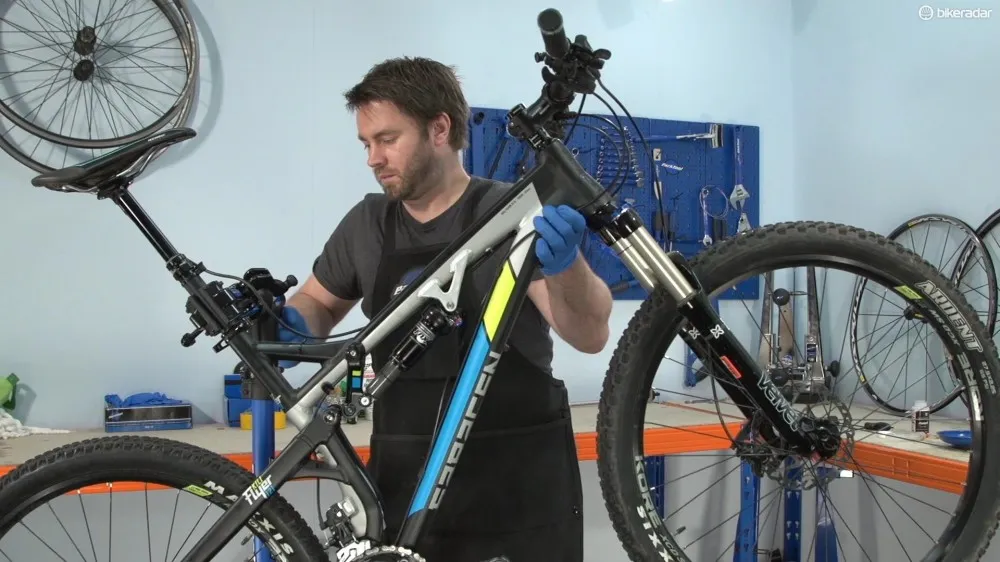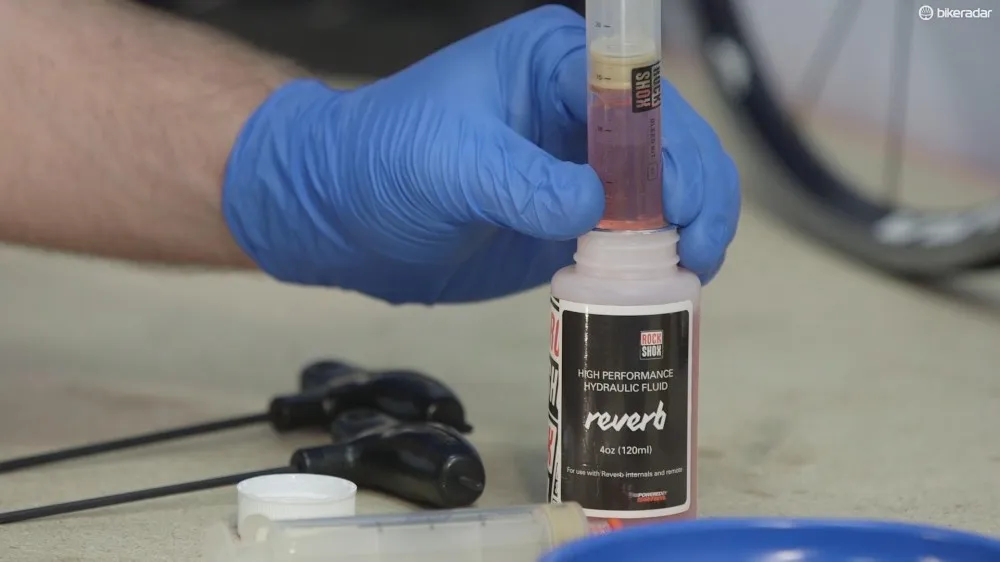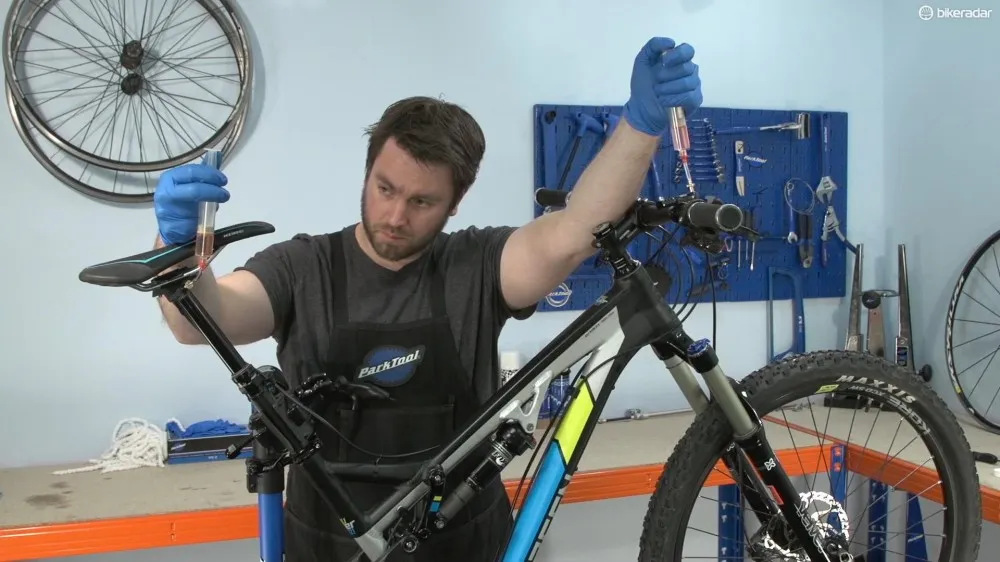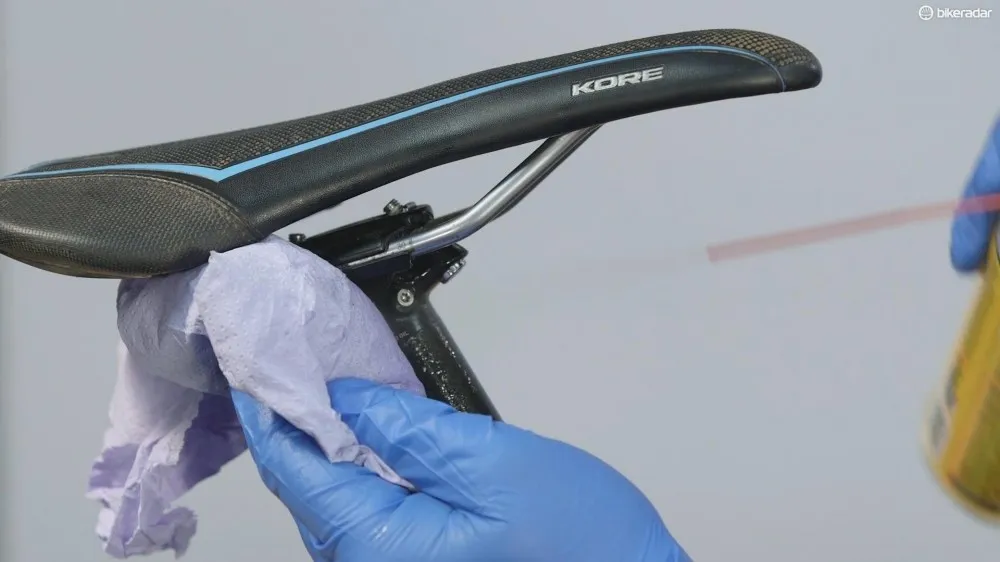The RockShox Reverb remains one of the most popular dropper posts out there, partly down to the fact that it is both reliable and easy to work on. Bleeding the system of your RockShox Reverb dropper seatpost will help keep it working in optimal condition.
It’s a fairly simple task that can be done at home with a simple bleed kit, so have a look at the video below to see BikeRadar's James Tennant talk you through the process.
How to bleed a rockshox reverb dropper seatpost
Video: How to bleed a RockShox Reverb dropper seatpost. For more maintenance videos, subscribe to the BikeRadar YouTube channel.
Tools for the job
- 2.5 weight suspension fluid
- Torx keys
- Reverb bleed syringes
- Paper cloth
- Degreaser
It’s important to note that Reverb dropper posts require a specific 2.5 weight hydraulic fluid that’s not the same as brake fluid. So make sure you purchase the right product – it will come as part of a bleed kit though.
How to bleed a RockShox Reverb dropper seatpost
1. Prepare
Fully extend the Reverb, then adjust the angle of the bike so that the actuator is higher than the top of the post – you may find this easier to do if you clamp the bike in a workstand.

Undo the mounting bolt, and position the actuator so the bleed port is at the highest point, then turn the speed adjuster to the slowest position.
Fill one of the syringes three quarters full – hold it upright and gently push the plunger to remove any air bubbles.

Remove the actuator bleed screw and attach the filled syringe. Undo the lug screw on the seatpost and screw in the other, empty syringe.
2. Purge system
Hold both syringes bottom-up and gently push on the the one with fluid in while easing the plunger on the other one out.This forces any air that is present in the system into the empty syringe.
When you have emptied the syringe on the actuator side, unscrew the now-full syringe from the seatpost, give it a tap and remove any air from it. Screw it back in and push the fluid back through the system as before, pulling up on the syringe that is being filled.
Again, make sure the syringes are upright – cycle the fluid between them until there is no air flowing in as you pull the plunger out.

When you’re happy there is no more air in the system, push in the seatpost side fully and unscrew, then return the bleed screw.
3. Bleed actuator
Hold the syringe upright, as before, and gently pull on the plunger to ensure there is no more air present. Press in the actuator while pulling up on the plunger of the syringe, then push down on the plunger as you allow the actuator to return to its normal position. Repeat this process five to 10 times to ensure there is no air inside the actuator.
Turn the speed adjuster fully to the fast (or '+') position, then back to slow – repeat this three times and leave in the fast position (or '+') direction. Again, pull up on the plunger to remove air.
Push on the plunger and return the speed adjuster to the slow position. Push in the actuator, then apply pressure on the syringe, slowly releasing the actuator to its extended position. You can now unscrew the syringe and return the bleed port screw.
Clean up any oil with paper cloth and degreaser, and return the actuator to the desired position on the bars.

You can now set your seatpost to the required height and adjust the speed controller. Finally, give the system a test and you’re ready to ride.
